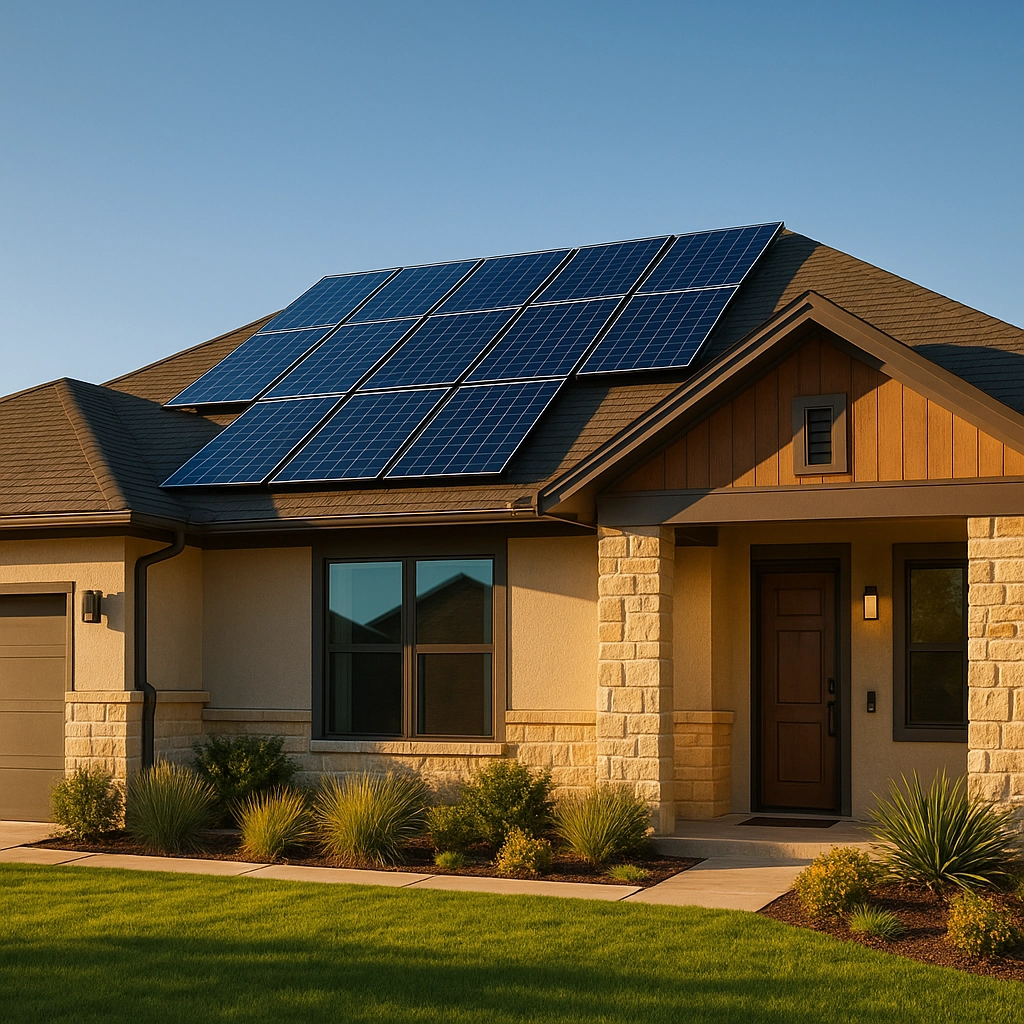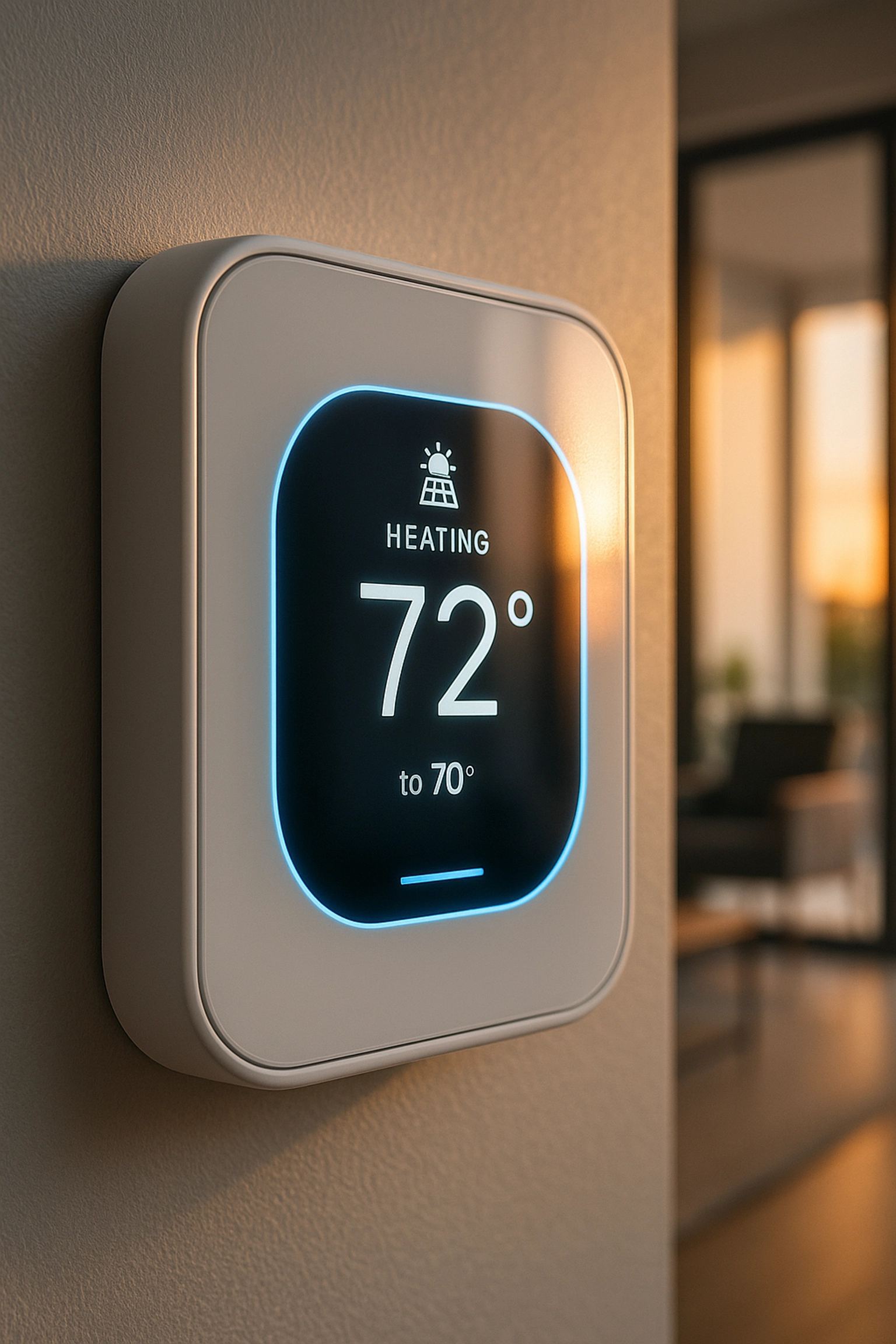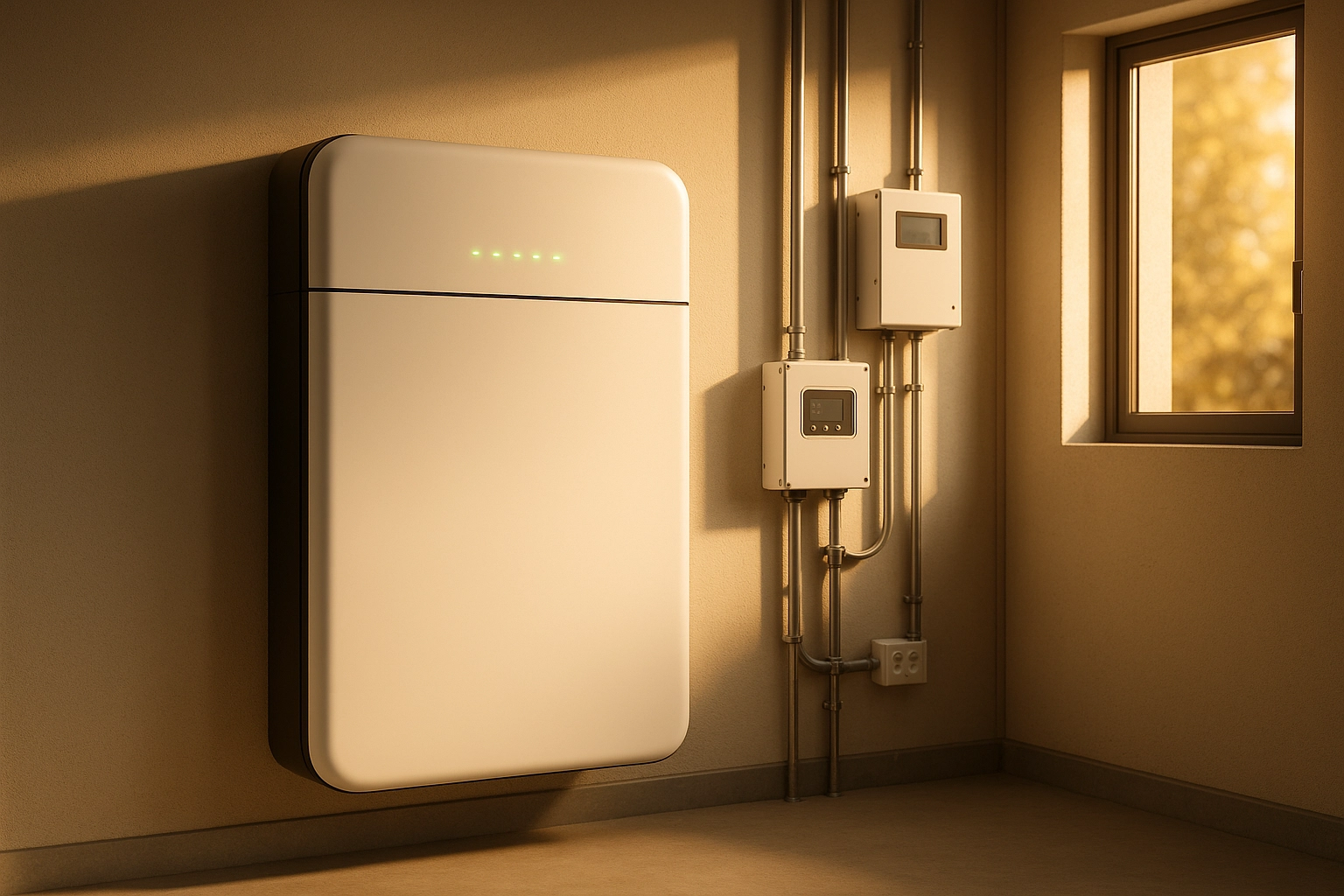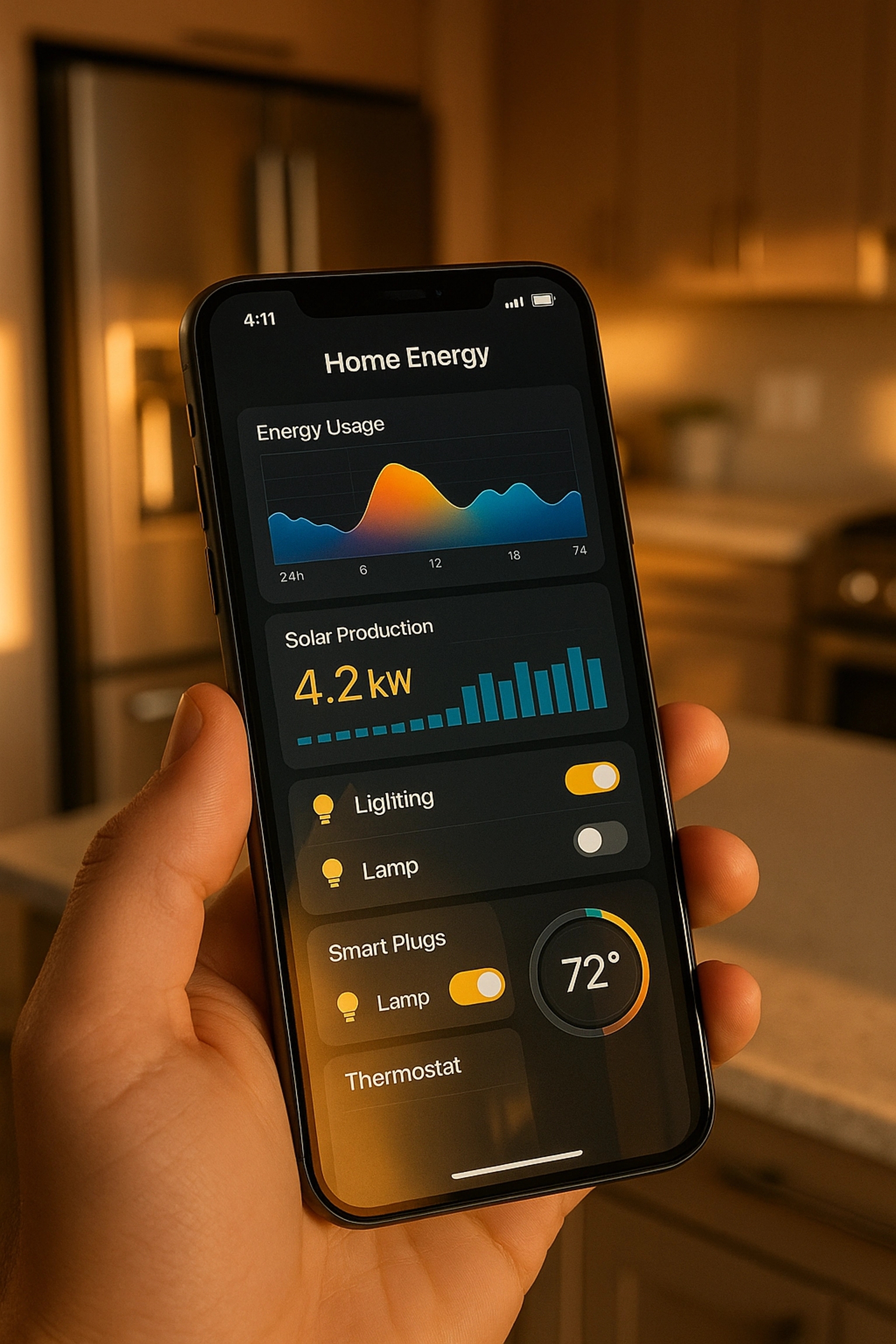Texas homeowners face a unique opportunity in 2025 to dramatically reduce their energy costs through the strategic combination of solar panels and smart home technology. With electricity bills averaging $156.56 monthly across the state and the federal solar tax credit set to phase out after December 31, 2025, the time to act has never been more critical.
The combination of these technologies doesn't just add savings: it multiplies them. While solar panels generate clean energy during the day, smart home systems optimize when and how that energy gets used, effectively doubling your potential savings compared to solar alone.
The Texas Energy Challenge
Texas leads the nation in energy consumption, with the average household using 1,132 kWh monthly: significantly higher than the national average. This translates to over $1,850 in annual electricity costs for most families. Add in the state's notorious summer heat waves and aging grid infrastructure, and you have compelling reasons to take control of your energy future.

The financial benefits of going solar in Texas are substantial. A properly sized solar system typically requires 13.57 kW to offset average consumption, with total installation costs around $29,063 before incentives. The federal investment tax credit provides a 30% deduction, reducing your out-of-pocket expense to approximately $20,344: an immediate savings of $8,719.
Over 25 years, Texas homeowners typically save $90,635 from their solar investment, with most systems paying for themselves within six years. However, these numbers represent solar alone: adding smart home integration can increase your total savings by an additional 20-40%.
How Smart Home Technology Amplifies Solar Savings
Smart home devices transform your house into an intelligent energy ecosystem that automatically optimizes consumption patterns. The key lies in load shifting and demand management: using energy when your solar panels are producing it most efficiently and minimizing grid consumption during expensive peak rate periods.
Smart Thermostats: Your HVAC Game-Changer
Air conditioning accounts for 50-70% of summer electricity bills in Texas. Smart thermostats with solar integration can pre-cool your home during peak solar production hours (typically 10 AM to 3 PM), then maintain comfort using minimal energy during expensive evening peak rates.
Advanced models learn your schedule and automatically adjust based on solar production forecasts. During high-production days, your system might cool your home to 72°F using free solar energy, then coast through the evening at 76°F while drawing minimal power from the grid.

Smart Water Heating Systems
Electric water heaters represent another major energy consumer, typically operating 24/7 regardless of energy costs or solar production. Smart water heating controllers can schedule heating cycles to coincide with solar generation, essentially providing "free" hot water during sunny periods.
Heat pump water heaters with smart controls can reduce water heating costs by up to 70% when paired with solar. These systems can learn your family's usage patterns and pre-heat water during peak solar hours, maintaining temperature with minimal energy use throughout the day.
Battery Storage: The Ultimate Energy Independence Tool
Smart battery systems transform solar from a daytime-only solution into a 24/7 energy independence strategy. In Texas, where grid reliability remains a concern, battery storage provides both financial and security benefits.
Modern battery management systems automatically optimize charging and discharging based on multiple factors:
- Time-of-use rates from your utility company
- Weather forecasts and solar production predictions
- Grid outage detection and backup power activation
- Peak demand reduction to lower utility demand charges

During sunny days, excess solar energy charges your batteries. During evening peak rate periods or grid outages, stored energy powers your home. This creates a buffer that maximizes your solar investment while providing energy security.
Smart Appliance Scheduling and Load Management
Modern smart appliances can communicate directly with your solar system to operate when clean energy is most abundant. Dishwashers, washing machines, and pool pumps can automatically schedule their heaviest energy consumption during peak solar hours.
Smart EV chargers represent perhaps the greatest opportunity for savings. If you drive an electric vehicle, smart charging systems can ensure your car charges primarily on solar power, eliminating transportation fuel costs entirely. For Texas drivers covering 12,000 miles annually, this could save an additional $1,500-2,000 per year in fuel costs.
Real-Time Energy Monitoring and Optimization
Comprehensive home energy monitoring systems provide granular insights into consumption patterns, identifying opportunities for additional savings. These systems track energy use by individual devices and can automatically adjust smart device schedules based on real-time solar production and consumption data.
The monitoring reveals surprising energy drains: phantom loads from electronics in standby mode, inefficient appliances, or poor insulation areas. Armed with this data, you can make targeted improvements that compound your solar savings.
Maximizing the 2025 Federal Tax Credit Window
The urgency for Texas homeowners cannot be overstated. The 30% federal tax credit represents an average savings of $9,000 for most installations, but this incentive begins phasing down after 2025:
- 2025: 30% credit (full benefit)
- 2026: 26% credit
- 2027: 22% credit
- 2028 and beyond: 0% credit for residential installations
This creates a narrow window to capture maximum savings. For a typical Texas installation, waiting until 2027 would cost you an additional $2,300 in lost incentives compared to acting in 2025.

Strategic Implementation Timeline
Immediate Actions (Now through Q2 2025):
- Begin solar consultation and system design
- Evaluate current smart home devices and plan integrations
- Complete permitting and utility interconnection applications
Installation Phase (Q3-Q4 2025):
- Complete solar installation to capture full federal tax credit
- Install battery storage system if including in project
- Begin smart device integration during system commissioning
Optimization Phase (Early 2026):
- Fine-tune smart home scheduling based on initial solar production data
- Add additional smart devices as budget allows
- Monitor and adjust system performance for maximum savings
Long-Term Financial Impact
The combined financial benefits extend far beyond immediate energy savings. Texas homeowners typically see complete payback within six years, with systems offsetting 97% of electricity consumption. When combined with smart home optimization, total energy costs can be reduced by 80-90%.
Conservative projections show Texas residents save $32,651 over their solar system's 25-year lifespan. Smart home integration can potentially add another $15,000-25,000 in additional savings through optimized consumption patterns, demand charge reduction, and enhanced battery utilization.
For many homeowners, the combination creates net-positive energy production during optimal months, with excess generation credits building throughout the year to offset winter consumption.
This integrated approach transforms your home into an intelligent energy ecosystem that provides maximum financial benefit while contributing to grid stability and environmental sustainability. With the federal incentive window closing rapidly, 2025 represents the last opportunity to achieve these unprecedented savings levels in Texas.
The question isn't whether you can afford to invest in solar and smart home technology: it's whether you can afford to miss this opportunity while energy costs continue rising and incentives disappear. Take action now to secure your energy independence and maximize your savings potential.
